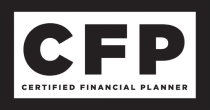No one likes a surprise tax bill—Trust me, I’ve been there too…
There are very few absolutes that I have discovered in financial planning over the past 20 years, however, a surprise tax bill certainly qualifies.
Let me share four examples of situations (that can be prepared for) catching high-achieving professionals off-guard with a hefty unexpected tax surprise.
Situation 1 – Brokerage Account Landmines 💥
This is the most common pitfall, where people unnecessarily pay taxes on an annual basis.
The types of investments in your brokerage account are critically important if your goal is to minimize your tax bill.
Because a brokerage account is taxable, your annual 1099 will disclose potential taxable events such as: Interest income, dividends, and capital gains distributions.
The most efficient investments to own inside of a brokerage account are municipal bonds, individual stocks that do not pay a dividend, index exchange traded funds (“ETF’s”), and index mutual funds.
Actively traded mutual funds are notorious for distributing capital gains to their shareholders on an annual basis (regardless of if you sold any investments throughout the year). The mutual fund is required to pass the gains on to the shareholders and unfortunately, you as the shareholder do not have any discretion on this activity.
This is most commonly rears its head in December.
Situation 2 – Beneficiary IRA Distributions
IRA distributions are taxed as ordinary income.
Due to new regulation, when inheriting a Beneficiary IRA, you must distribute the entire account balance within 10 years (in some circumstances, five years).
Because of the progressive structure of the U.S. tax system, the IRA distribution is stacked on top of your current income.
In 2024, the 24% tax rate for married families filing jointly is $201,051 – $383,900 and the 32% tax rate is $383,901 – $487,450.
For illustrative purposes, let’s say a family has household income of $383,900 (the top of the 24% tax bracket) and inherits $100,000 from a Beneficiary IRA distribution.
Let’s assume that you even responsibly withheld 20% on the $100,000 distribution.
Assuming all your other withholdings were perfect calculated and planned for, you’d still owe the Fed $12,000 because that $100,000 inheritance would have been tax in its entirety at the 32% federal tax level.
This is very common with high-achieving professionals during their prime working years.
Situation 3 – Vesting Restricted Stock Units “RSU’s”
When “RSU’s” vest, they are taxed immediately as ordinary income.
It does not matter whether you hold the shares or sell the shares, the account value when they vest is the amount reported as ordinary income on your W-2.
Most plans automatically withhold 22% at vesting and this usually leads to one of two situations: 1) Either an additional, unnecessary withholding, or 2) grossly underpaying your tax liability and having an unexpected bill.
Situation 4 – Exercise Incentive Stock Options “ISO’s”
The worst for last?
ISO’s are a unique type of stock option that, when exercised, can trigger something called the Alternative Minimum Tax (“AMT”). Ironically, the AMT is neither alternative, nor minimum. It is mandatory and maximum.
Friends should not let friends exercise ISO’s without the consultation of a trusted financial planner or tax professional who is intimately familiar with how these stock options work.
Triggering the AMT tends to be the most painful of the tax surprises, but it doesn’t have to be—if you’re prepared for it.
The AMT places a floor on the percentage of taxes that a filer must pay to the government, no matter how many deductions or credits the filer may claim.
The AMT is for taxpayers who earn above certain income thresholds.
The AMT recalculates income tax after adding certain tax preference items back into adjusted gross income. It uses a separate set of rules to calculate taxable income after allowed deductions. Preferential deductions are added back into the taxpayer’s income to calculate their alternative minimum taxable income (AMTI), and then the AMT exemption is subtracted to determine the final taxable figure.
Conclusion
Truthfully, the best way to avoid a big tax surprise is to be actively engaged with a financial planner so that you’re collaboratively acting upon your financial plan.
It can be said that the most dangerous quadrant of knowledge is when you don’t know what you don’t know. Financial planning can help reduce the blind spots.
If you or someone you’re close to could use help aligning their finances and establishing a financial plan, please reach out to us, we’re accepting new clients and eager to help.
Cheers, Nic
The opinions voiced in this material are for general information only and are not intended to provide specific advice or recommendations for any individual.
Dividend payments are not guaranteed and may be reduced or eliminated at any time by the company.
ETFs trade like stocks, are subject to investment risk, fluctuate in market value, and may trade at prices above or below the ETF’s net asset value (NAV). Upon redemption, the value of fund shares may be worth more or less than their original cost. ETFs carry additional risks such as not being diversified, possible trading halts, and index tracking errors.







